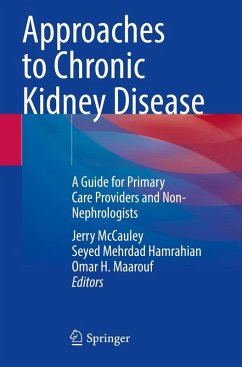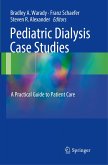Chronic kidney disease (CKD) is a major global public health problem, affecting nearly one in seven adults in the United States alone. It is a disease that integrates chronic illness at several levels, and the progressive condition is associated with high rates of co-morbidity.
This text provides a comprehensive, current state-of-the art review of this field, serving as a valuable resource for primary care providers and non-nephrology clinicians that treat patients with CKD. It is comprised of 24 chapters focused on specific aspects of the disease. The first 2 chapters provide a bit of background on the disease, describing the anatomy and physiology of the kidney as well as the definition and epidemiology of the disease. The following 3 chapters discuss the detection, prevention and progression of the disease. The next 6 chapters describe the relationship of the disease with other conditions and most common co-morbidities such as diabetes and hypertension. The chapters, that follow focus on the CKD associated complications and the CKD within special populations such as the elderly and minorities as well as dietary restrictions and drug dosing. The book concludes with discussion on preparation for renal replacement therapy and preemptive organ transplantation as an alternative to dialysis in the management of the advanced CKD.
Written by experts in the field, Approach to Chronic Kidney Disease is a comprehensive guide for clinicians, especially primary care providers including residents and fellows in training, who take care of chronic kidney disease patients. It is also a useful tool for researchers dealing with this challenging field.
This text provides a comprehensive, current state-of-the art review of this field, serving as a valuable resource for primary care providers and non-nephrology clinicians that treat patients with CKD. It is comprised of 24 chapters focused on specific aspects of the disease. The first 2 chapters provide a bit of background on the disease, describing the anatomy and physiology of the kidney as well as the definition and epidemiology of the disease. The following 3 chapters discuss the detection, prevention and progression of the disease. The next 6 chapters describe the relationship of the disease with other conditions and most common co-morbidities such as diabetes and hypertension. The chapters, that follow focus on the CKD associated complications and the CKD within special populations such as the elderly and minorities as well as dietary restrictions and drug dosing. The book concludes with discussion on preparation for renal replacement therapy and preemptive organ transplantation as an alternative to dialysis in the management of the advanced CKD.
Written by experts in the field, Approach to Chronic Kidney Disease is a comprehensive guide for clinicians, especially primary care providers including residents and fellows in training, who take care of chronic kidney disease patients. It is also a useful tool for researchers dealing with this challenging field.








